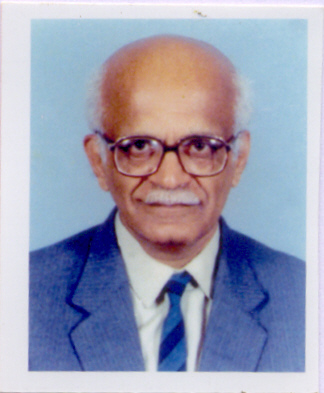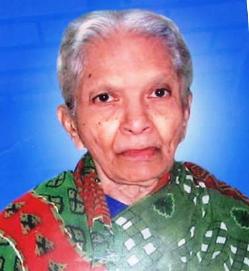WW II Rice-Wheat Nonfermented Dosa
Category:
Vegetarian, main dish, spicy

Shenoi, a civil engineer and MBA, rose to the rank of Deputy Director-General of Works in the Indian Defence Service of Engineers. He has also been a member of HUDCO’s advisory board and of the planning team for Navi Mumbai. After retirement he has been helping NGOs in employment-oriented training, writing articles related to all aspects of housing, urban settlements, infrastructure, project and facility management and advising several companies on these issues.
There are innumerable varieties of dosas. This is one type that my mother, B. Sharada Bai, used to make. My wife has helped me in putting together this recipe.

B. Sharada Bai, (1914/15-2005), was born in Bantval, then part of the British-ruled Madras presidency and now part of Karnataka. Her father ran an unsuccessful small family business. Fourth among 11 children, she studied only up to the third standard. She was married to a relative in another state and clime - Mysore. Her husband died when she was young, leaving her almost penniless. She used to search for cheaper and alternative ways of preparing nutritious food for her four children.
During World War II, food rationing was introduced in the Princely state of Mysore, where we lived. Rice was scarce, but wheat was less scarce. Along with rice, a ration card holder could also buy some wheat. I am not sure whether it was compulsory to buy some wheat along with rice, to alleviate the rice shortage.
Perhaps this was the first time that people in Mysore, or more broadly in South India, were forced to use wheat in our rice-based diet. The North Indian wheat-based chapati was not popular, and chapati at breakfast was not even thinkable for our family.
My mother started making dosas with various proportions of wheat and rice flours. She came up with this tasty recipe, which was also convenient because she did not have to ferment the rice overnight, as with the conventional dosa.
Other people were also trying out wheat dosas at that time. The owner of Bangalore's famous Mavalli Tiffin Room (now often abbreviated as MTR) once said he started experimenting with making the wheat-based rava iddlis during those times.
Makes 16 dosas.
Editor's note: In her review, Meera Balasubramanian wrote, "The nice thing about this dosa is that it does not require the usual soaking of rice, grinding and fermenting. It is instant and very tasty. My mother used to make a sweet version of this instant dosa using jaggery instead of the jeera, chillies, salt and coriander."
Ingredients
- Rice powder - 600 millilitres (ML) or 3 cups
- Wheat flour - 75 ML or about 0.33 cups
- Cumin (jeera) seed - 1 tsp
- Green chillies (shredded) - 2
- Red chillies (shredded) - 2
- Salt - 0.5 tsp
- Coriander (dhaniya) powder - 0.5 tsp
- Coconut shavings - 1 tsp
Optional: Add two teaspoons of yogurt (curds) to dough.
The quantity of spices can be modified to suit your taste.
Editor's note: In her review, Meera Balasubramanian wrote, "The ingredients could include some green coriander (dhaniya) leaves - adds a colourful touch."
Method
Mix all the ingredients in a bowl. Add water in small quantities till the mixture gets the consistency of a syrup. The batter needs to be pourable from a ladle - slightly watery
Spread a little oil or ghee lightly on a warm tawa (griddle). If the tawa is non-stick, you may not need the oil.
Stir the liquid and pour on the tawa with a ladle, moving the ladle in a circle to pour the mixture across the tawa. If required, spread the mixture with a wooden flat spatula smeared with oil to prevent sticking. A little oil may be required to prevent the dosa from sticking to the tawa.
Cover the tawa with a lid and fry the dosa on medium heat, 2-3 minutes, only one side.
Remove from the heat, and serve it hot with any chutney you like.
Stir the contents of the dosa mix every time before pouring the mixture on the tawa for the next dosa.
© M P V Shenoi 2009
Comments
Add new comment